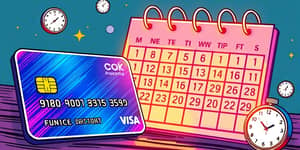
Your credit card statement can feel like a maze of numbers, dates, and fine print. But with the right guidance, this monthly report becomes a powerful tool for taking control of your finances and making informed decisions about your spending.
In this comprehensive guide, we’ll walk you through every section of your statement, explain the key terms, and share actionable tips to keep your credit health on track.
A credit card statement is a monthly summary of all activity on your card during a billing cycle. It details purchases, payments, credits, fees, and interest charges. Each statement includes your account number, billing period start and end dates, and the statement date.
Understanding this document helps you spot errors, detect fraud, and plan payments to avoid unexpected costs.
Your statement is divided into clear sections that offer a snapshot of your card’s performance:
These figures give you an immediate overview of your account and the amount you need to pay to stay in good standing.
This section lists each transaction with the vendor name, transaction date, posting date, amount, and a brief description. Transactions may be grouped by date or type—purchases, fees, cash advances—to help you review spending patterns.
Your statement highlights two crucial numbers: the statement balance and the minimum payment. Paying the full statement balance by the due date typically avoids interest on new purchases. The minimum payment is the smallest amount you must pay to avoid late fees, but paying only the minimum accrues interest on the remaining balance.
Your credit limit is the maximum you can charge to your card. Available credit is what remains after accounting for your current balance. Cash advances and balance transfers often have their own sub-limit. Exceeding these limits may trigger over-limit fees or declined transactions.
If you hold a rewards card, look for a summary of points or cashback earned, redeemed, and your remaining balance. Tracking these figures helps you maximize redemption opportunities.
Your statement clearly itemizes every fee and interest charge. Common fee types include:
Interest charges accrue on unpaid balances, cash advances, and balance transfers. Each transaction type may carry a different annual percentage rate (APR). Your statement provides the current APRs and the interest amount charged for each category, along with year-to-date totals.
Under federal law, creditors must include a minimum payment warning. This section shows:
- How long it will take to pay off your balance making only minimum payments.
- The total cost of this approach, including interest.
These warnings illustrate the high cost of rolling balances and encourage more aggressive repayment strategies.
Your payment due date is typically at least 21 days after the billing cycle ends. A calendar reminder or automatic payment setup can prevent late fees and rate hikes.
Look for sections on credit limit, available credit, and any changes to terms. Credit card issuers must notify you at least 45 days before altering rates, fees, or other important terms.
Balance transfers let you move debt from one card to another, often at promotional APRs. Check for balance transfer fees and the expiration date of introductory rates.
Cash advances include ATM withdrawals and certain peer-to-peer app transactions. They carry higher APRs and fees, and interest accrues right away.
Regularly reviewing your statement is the first step to strong credit health. Consider these best practices:
Statement Balance: The total amount you owe at the end of the billing cycle.
Current Balance: Your balance right now, including recent transactions.
Minimum Payment: The smallest amount you must pay to keep your account in good standing.
Payment Due Date: The deadline to submit your minimum or full payment.
Credit Limit: The maximum you can charge to your card.
Available Credit: Credit limit minus current balance.
Cash Limit: Sub-limit for cash advances and balance transfers.
Annual Percentage Rate (APR): The yearly cost of borrowing, expressed as a percentage.
Balance Transfer: Moving debt from one credit card to another.
Cash Advance: Withdrawing cash using your credit card.
Fees: Charges such as annual fees, late fees, balance transfer fees, and cash advance fees.
References













